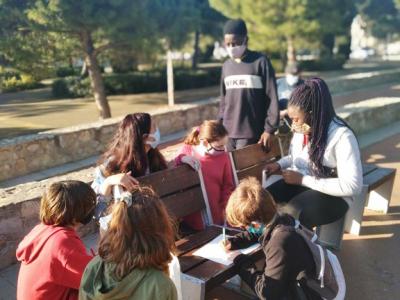Description
Palma is the main city on the island of Mallorca. The city extends between the Mediterranean Sea and the mountain chain of Tramuntana. Historic Palma boasts an outstanding religious architecture, patios and iconic buildings attracting millions of visitors every year.
The city of Palma is now revising its urban masterplan to tackle, among others, the lack of green infrastructure through the planning of green civic axis, superblocks and territorial connectors to allow equitable distribution of green space. The new masterplan will double the existing surface of greenery.
The municipality of Palma does not start from scratch in terms of civic engagement, although some past experiences encountered difficulties in their development. BiodiverCities has brought an opportunity to explore the complexity of participation and co-creation, as well as an opportunity to raise awareness of the public on the topic of green spaces.
Three activities have been planned and have been carried out in parallel within the BiodiverCities framework, exploring different scales and areas of the city. The engagement processes opened three civic dialogues providing safe spaces where ideas, expectations, sensitivities and views on the future of the city could emerge:
A. Children’s Council pollinator gardens. The Children’s Council is a municipal body for participation composed of thirty two boys and girls aged between 6 and 16 years chosen to represent the children of the city within the framework of the Child Friendly Cities program by UNICEF. Throughout different activities, that took place between February and June 2021, the kids -acting as biodiversity ambassadors, designed and built pollinator gardens in five parks of the city by engaging, among others, the schools and entities they represent.
B. Cotlliure tactical pedestrianalisation. Cotlliure Street civic axis is a strategic project for the city of Palma, which is an opportunity to develop a new green connector in a very densely built and inhabited area of the city. Therefore, the municipality launched in February 2021 a competition for the co-design of the urbanisation of Cotlliure Street with an innovation challenge: the bid specifications for the public tender introduced the citizen engagement in the process of planning. The different activities held in February 2022 gathered many results and ideas for the future axis, which will be introduced in the urbanisation project to be implemented.
C. Es Pil·larí neighborhood in the Masterplan. The traditional neighbourhood of Es Pil·larí in the outskirts of the city has a history of being disregarded in past municipal plans. Therefore, the demand of the neighbors association of including an old quarry as a new public green space has been included in the new Masterplan. Moreover, the engagement activity, held in February 2022, focused on discussing also other matters such as heritage protection, green paths network and specifications of the new green space.
In general, BiodiverCities allowed to build expertise, within the municipality itself, to replicate in future projects.
When and Where
Policy Context
Participants
Methodologies
Impact
Assessment
Moreover, inadequate financial and human resources caused limitations for carrying out engagement processes. The department in charge of participation, within the Municipality of Palma, has not the capacity to actively contribute to all the programs and projects undertaken by the municipality nor has the capacity to train or extend its expertise to the rest of departments/colleagues that could be interested in participatory processes. This make engagement very challenging as it implies that activities are done if there is a clear will of the team leading the project and without any real internal support. In this case, BiodiverCities provided financial support for an expert to overcome this challenge.
Time constraints were a challenge mainly for the Cotlliure Street project, both due to the bureaucratic obstacles and the bad planning.
Other challenges identified were also a poor culture of engagement, both among the civil servants and citizenry. This is related, on one side, to the lack of trust from citizens towards public institutions and, on the other, the concern over control among politicians and civil servants. To overcome them, it has been important to work hard on running successful engagement processes that can slowly transform culture.
